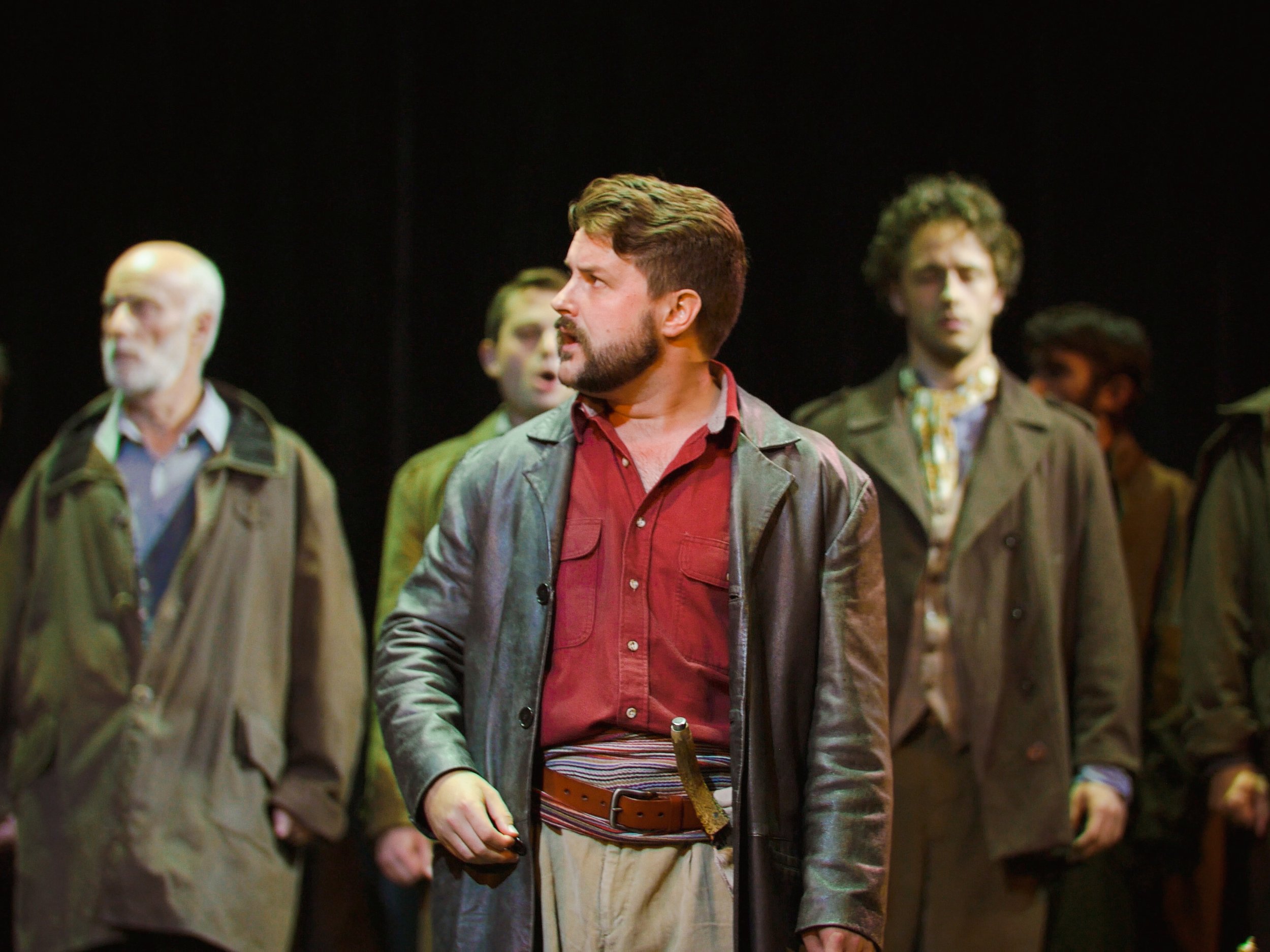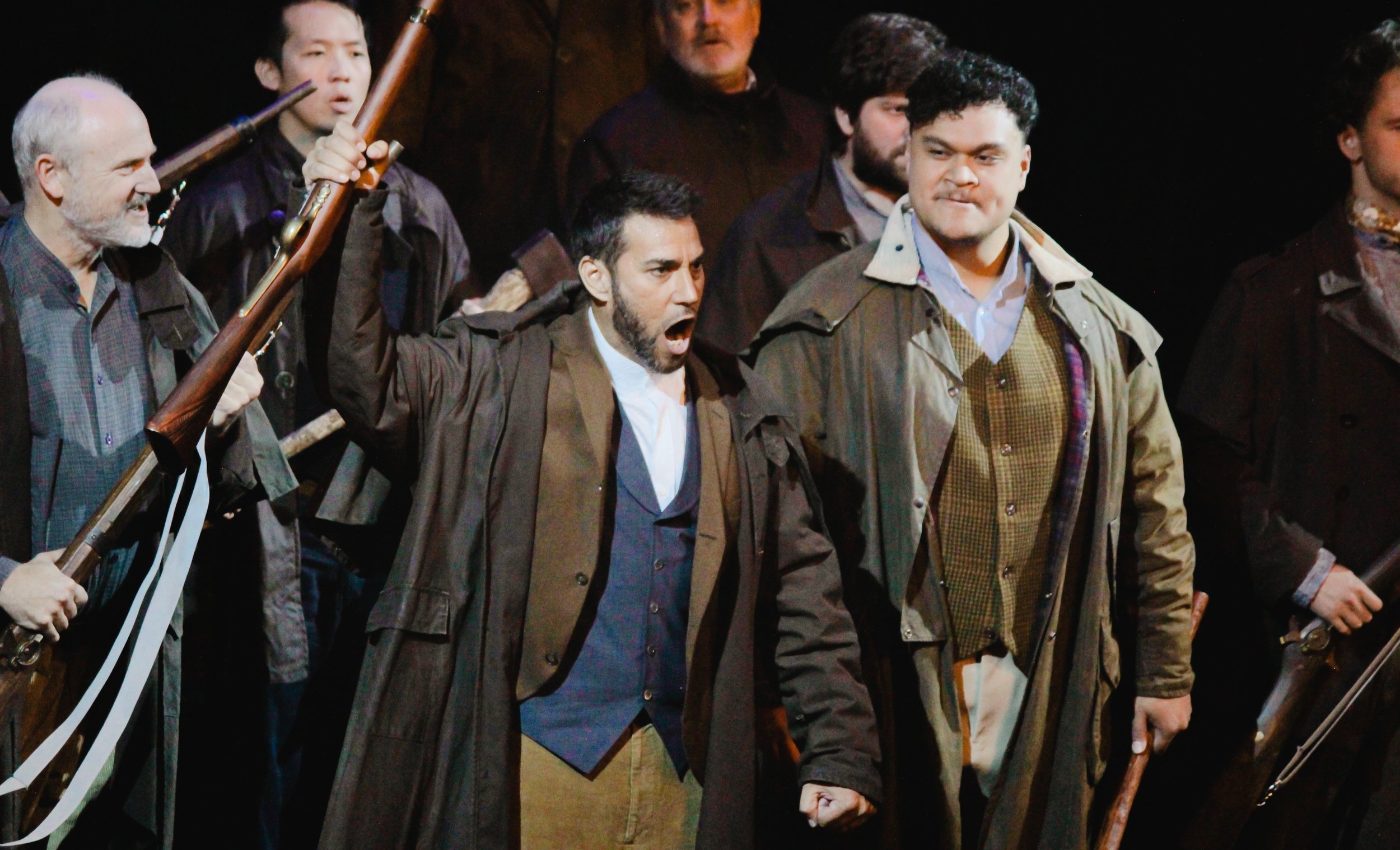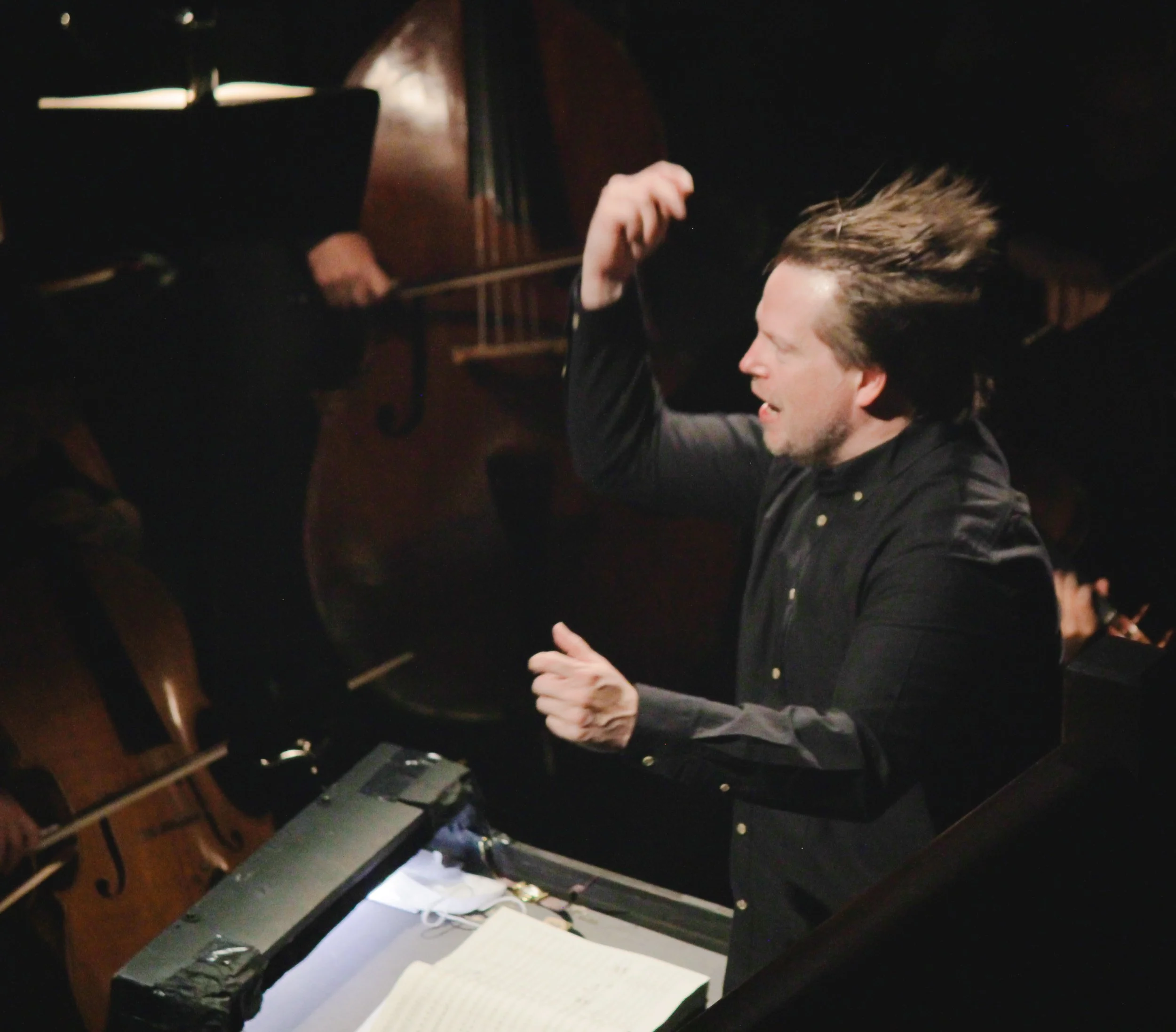Wellington Opera’s Lucia: all about the singing
For its current season of Donizetti's Lucia di Lammermoor, the Wellington Opera company has assembled one of the most consistently fine casts of New Zealand singers I have heard on a Wellington stage. As a result, the production thrilled its opening night audience vocally, musically and expressively.
Baritone Phillip Rhodes as Enrico and soprano Emma Pearson as Lucia in Wellington Opera’s production of Donizetti’s Lucia di Lammermoor
Photo credit: Roozen + Sibanda
One of the great beauties of Italian opera is that it is almost always about singing first. Yes, it is bel canto, "beautiful singing", but more than that the vocal lines carry the whole weight of the opera, its expression, its narrative, its characterisation and its power. Donizetti is an exemplar of this approach, as were Rossini just before him and Verdi after. German composers, particularly Wagner, shared the weight of expression and description with the orchestra much more than the Italians. In Donizetti's operas, the orchestra is transparent, there to serve the singers, to underline their arias and choruses - sometimes it stops playing altogether, letting the voice alone hold the audience’s rapt attention.
Lucia di Lammermoor is probably Donizetti’s most famous opera. The ‘Romeo and Juliet’ story tells of the heroine Lucia, forced by her brother, Enrico, to marry Arturo, a man she doesn’t love, in order to secure her family’s fortunes and position. Her heart belongs to another man, Edgardo, her brother’s enemy. Deceived about Edgardo’s fidelity, she goes through with the marriage under duress and loses her sanity on her wedding night, killing her new husband and eventually losing her own life. The grief-stricken Edgardo then kills himself.
Soprano Emma Pearson, star of Wellington Opera’s La Traviata last year, is a thrilling Lucia. Her compelling performance builds in power as the story develops through the three Acts. In Act 1 she is relaxed and happy, her maid Alisa (Hannah Ashford-Beck) in attendance as she awaits Edgardo, dabbling her bare feet in the water. After an introductory harp solo, the mood darkens during her aria "Regnava nel silenzio" (“(The night), reigned in the silence”) with its tale of ghosts and warnings. Here as elsewhere, Pearson’s vocal control, timbral variety and emotional subtlety drew the audience in.
Tenor Oliver Sewell as Edgardo
“….in magnificent voice and an assured stage presence.”
Photo credit: Roozen + Sibanda
As Lucia’s ill-fated lover Edgardo, tenor Oliver Sewell is in magnificent voice, and their passionate love duet is an early musical highlight. His role is surrounded by drama and his assured stage presence allows him to make the most of the conflicts, whether in aggressive confrontations with Enrico, heart-broken bewildered anger towards Lucia or, finally, in full-voiced moving grief in Act 3.
Enrico is indeed the villain of the opera, symbol of male and malevolent power, but Phillip Rhodes is brilliant at navigating a character’s emotional conflicts and contradictions, as we saw last year in La Traviata. He and Pearson have a great stage empathy and although his remorse is genuine, yet again he is a force of evil persuading and manipulating his sister, as he did as Germont to her Violetta, to give up her true love. Rhodes’ singing is thrilling, his strong baritone full of variety as his role carries him from rage, sadness and despair to determined and threatening belligerence.
Phillip Rhodes as Enrico, flanked by Jordan Fonoti-Fuimaono as Normanno
“…male and malevolent power”
Photo credit: Roozen + Sibanda
The three principals are ably supported by four other solo roles, Samson Setu as the elderly Raimondo, Emmanuel Fonoti-Fuimaono as the doomed bridegroom Arturo, Jordan Fonoti-Fuimaono as Enrico’s sidekick Normanno and Ashford-Beck as Alisa. All these young singers have fine voices and inhabited their roles with authenticity and confidence.
Donizetti offers plenty of scope for his chorus to participate in the action. The Wellington Opera Chorus sing with conviction and a strong, ringing tone, their on-stage movement working much better than in La Traviata.
Wellington Opera is providing invaluable opportunities for New Zealand singers in its productions, demonstrating the growing strength of the pool of local artists. On the podium is rising Swedish conducting star Tobias Ringborg. He accompanies the singers with empathy and sensitivity, while drawing consistently fine playing from the musicians of Orchestra Wellington.
Conductor Tobias Ringborg
“…empathy and sensitivity in accompaniment of the singers.”
Photo credit: Roozen + Sibanda
Although it isn’t mentioned in the printed programme, the setting is apparently the South Island of New Zealand in the 19th century. Apart from allowing the use of handsome oilskin coats of the Dryza-Bone variety, the setting is irrelevant. Mark McEntyre’s set design is dark, drab and simple and works beautifully, never distracting from the singing and action and adapting easily to different scenes and locations. It’s enlivened by imaginative lighting by Rowan McShane, subtle at first but more dramatic in the Act 3 storm, lightning flashing against a blood red sky.
The visual and musical drama of that scene, where Enrico challenges Edgardo to a duel, precedes the famous “mad scene”, the emotional and musical climax of Lucia di Lammermoor. All attention centres on Lucia, emerging blood-stained from the upstairs bridal chamber having murdered her new husband and entered a frightening world of delusion. Pearson is outstanding in this scene, her portrayal of the demented heroine as convincing as her astonishing singing. Mercurial mood changes are matched with vocal variety and fluid stage movement and as audience we are rivetted by her anguish and hallucinatory joy.
Lucia (Emma Pearson) in the famous “mad scene”
“…bloodstained and delusional.”
Photo credit: Roozen + Sibanda
Lucia’s extended singing in this scene is simply and tellingly accompanied in the opera by either glass harmonica or flute. (Donizetti had scored the part for ‘musical glasses’, traditionally associated with insanity, but had to substitute flute at the 1835 premiere because the glass harmonica player quit.) Here Karen Batten’s beautiful flute playing is a heart-breakingly sensitive musical partner in the aria.
Edgardo (Oliver Sewell) contemplates death in the final scene of the opera
Photo credit: Roozen + Sibanda
Of course, Edgardo also has to die. Sewell’s consistently fine singing and acting carry us through the final scene, inevitably a little less intense than Lucia’s demise. A nice directorial touch from Sara Brodie has Lucia returning in the final seconds, slipping in wraith-like from the wings to hold her lover in death as the pair are re-united in the after-life. A huge ovation confirmed that the audience was both delighted by the singing and moved by the production. This Lucia, absolutely the best work so far from the company, deserves full houses for the rest of the season.
Donizetti’s Lucia di Lammermoor Wellington Opera, with the Wellington Opera Chorus and Orchestra Wellington, Tobias Ringborg (Conductor), Sara Brodie (Director) soprano Emma Pearson (Lucia), baritone Phillip Rhodes (Enrico), tenor Oliver Sewell (Edgardo). St James Theatre, Wellington 18-25 March 2023. Tickets here.






